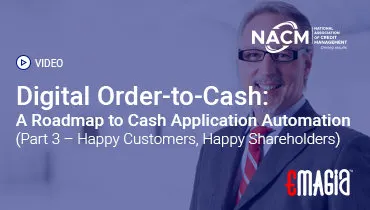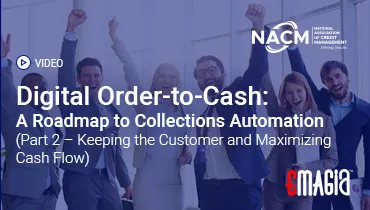Introduction to Lockbox Payment Processing
In today’s fast-paced business environment, efficient cash flow management is crucial. Lockbox payment processing offers a solution that accelerates the collection and processing of receivables, enhancing liquidity and operational efficiency. By outsourcing the receipt and processing of payments to a third-party service, businesses can reduce mail float, minimize manual handling, and gain quicker access to funds.
Understanding Lockbox Payment Processing
What is Lockbox Payment Processing?
Lockbox payment processing is a service provided by banks or third-party vendors where customer payments are directed to a special post office box (lockbox) rather than the company’s address. The service provider collects, processes, and deposits these payments directly into the company’s bank account, often on the same day of receipt.
How Does Lockbox Payment Processing Work?
- Customer Mailing: Customers send their payments to a designated lockbox address.
- Collection: The service provider collects the payments from the lockbox multiple times daily.
- Processing: Payments are opened, scanned, and processed using high-speed equipment and software.
- Deposit: Funds are deposited into the company’s bank account.
- Reporting: Detailed remittance information is provided to the company for reconciliation.
Types of Lockbox Services
Retail Lockbox
Designed for businesses that receive a high volume of low-dollar payments, such as utilities or subscription services. Payments are processed quickly to ensure timely posting.
Wholesale Lockbox
Suited for businesses handling low-volume, high-dollar payments, like insurance companies or B2B firms. These services often include detailed remittance processing.
Electronic Lockbox
Integrates electronic payment processing, capturing check images and ACH payments for faster processing and better data integration.
International Lockbox
Caters to businesses with international customers, handling payments in foreign currencies and complying with international banking regulations.
Benefits of Lockbox Payment Processing
Accelerated Cash Flow
By reducing mail float and processing times, companies gain quicker access to funds, improving liquidity.
Reduced Processing Costs
Outsourcing payment processing minimizes the need for in-house resources, leading to cost savings.
Enhanced Accuracy and Efficiency
Automated processing reduces manual errors, ensuring accurate and efficient handling of payments.
Improved Security
Lockbox services offer secure handling of payments, reducing the risk of theft or fraud.
Better Reporting and Reconciliation
Detailed remittance information facilitates easier reconciliation and financial reporting.
Challenges and Considerations
Costs
While lockbox services offer numerous benefits, they come with costs such as setup fees, monthly maintenance charges, and per-item processing fees.
Integration with Existing Systems
Ensuring seamless integration with current accounting and ERP systems is essential for maximizing efficiency.
Customer Communication
Customers need to be informed about the new payment address and any changes in the payment process.
Implementing Lockbox Services
Selecting a Provider
Evaluate providers based on their experience, technology, security measures, and cost structures.
Setting Up the Service
Work with the provider to establish lockbox addresses, integrate systems, and test the process before going live.
Training and Support
Ensure staff are trained on new processes and have access to support for any issues that arise.
How Emagia Enhances Lockbox Payment Processing
Emagia’s Intelligent Lockbox Solutions
Emagia offers advanced lockbox processing solutions that integrate artificial intelligence and automation to streamline receivables management.
Key Features
- AI-Powered Data Capture: Utilizes machine learning to accurately extract data from various payment formats.
- Seamless Integration: Easily integrates with existing ERP and accounting systems.
- Real-Time Reporting: Provides up-to-date insights into payment processing and cash flow.
- Enhanced Security: Implements robust security measures to protect sensitive financial data.
Benefits
By leveraging Emagia’s solutions, businesses can achieve faster processing times, reduced errors, improved cash flow, and enhanced customer satisfaction.
Frequently Asked Questions
What is the difference between a lockbox and a PO box?
A PO box is a general mailing address, while a lockbox is specifically used for receiving and processing payments.
Are lockbox services only for check payments?
No, modern lockbox services can handle various payment types, including ACH, wire transfers, and electronic payments.
How secure are lockbox services?
Lockbox services employ strict security protocols, including secure facilities, encrypted data transmission, and controlled access to ensure the safety of financial information.
Can small businesses benefit from lockbox services?
Yes, small businesses that receive a significant volume of payments can benefit from improved efficiency and cash flow management.
How long does it take to implement a lockbox service?
Implementation timelines vary but typically range from a few weeks to a couple of months, depending on the complexity of integration and testing requirements.
Conclusion
Lockbox payment processing is a valuable tool for businesses seeking to enhance their accounts receivable processes. By outsourcing payment collection and processing, companies can achieve faster cash flow, reduced processing costs, and improved operational efficiency. With advanced solutions like those offered by Emagia, businesses can further optimize their receivables management and stay ahead in today’s competitive landscape.



